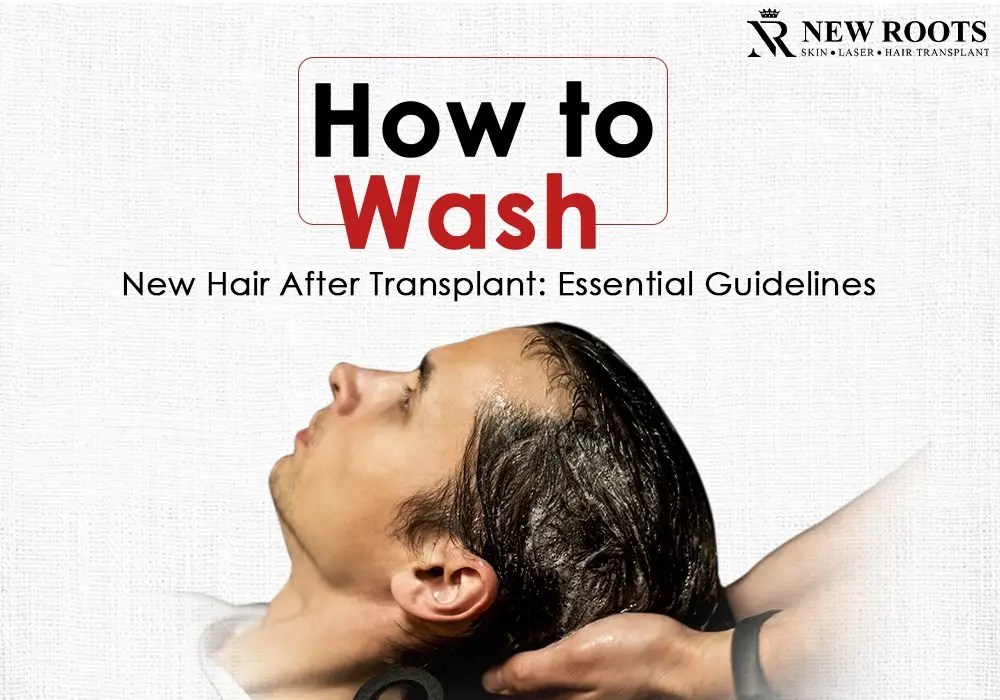How to Wash New Hair After Transplant: Essential Guidelines:
Washing your hair after a hair transplant may prove to be one of the most critical steps one has to take in the recovery period. This helps remove dried blood and scabs from the transplanted area and keeps it clean, promoting healthy hair growth.
We are going to discuss the best manner of how to wash new hair after transplant in this article, and we will discuss the best practices for how to wash new hair after transplant, including the timing, techniques, and products to use.
Timing of the First Hair Wash:
The timing of the first hair wash is very critical. It is usually recommended that you wait a minimum of 5 days after surgery and learn how to wash new hair after transplant for the first time. This allows for the transplanted hair roots to be correctly anchored in place and reduces the risk associated with disturbing the grafts during washing.
However, your surgeon will be able to counsel you regarding when you can plan for your first post-transplant hair wash. Since everyone’s case is different, your doctor can give you the best advice.
Preparing for the First Wash:
Before washing your hair, learn how to wash new hair after transplant make sure that a low-pressure water source, a gentle shampoo, moisturizer, and a clean towel are easily accessible. Also, equip yourself with a comb or soft brush for the gentle teasing of hairs later. Use a low-pressure water source or cups to wet your hair, as direct water pressure directly on the grafts should be avoided.
How to Wash Your Hair:
Gently Wet Your Hair:
Carefully wet your hair using lukewarm water. Avoid the strong shower jet or having the pressure of water head-on to your head since it will dislodge the grafts. Instead, wet your hair with a low-pressure water source or cups.
Apply the Recommended Shampoo:
Use the recommended shampoo, usually given by the surgeon. Massage a small amount into your scalp using your fingertips or the heel of your hands; however, rubbing and scrubbing are highly discouraged because they irritate the scalp and may dislodge the grafts.
Wash your scalp with warm water:
The soap should be thoroughly washed out. Use cups or a low-pressure water source to rinse your hair; avoid the direct pressure of the water on it.
Dry Your Hair:
After rinsing, gently pat it dry with a clean towel; hair should not be rubbed or scrubbed, as it irritates and causes damage to the grafts.
Products to Use:
How to wash new hair after transplant following a transplant, gentle products should be used, specifically designed for the same. They should not contain harsh chemicals, silicones, or perfumes, which may irritate your scalp and harm your hair. Your surgeon will point out every hair product you should use on your transplanted hair so that it remains healthy in the long run.
Further Recommendations:
Follow the Instructions Given by Your Surgeon:
Your surgeon will instruct you on how to wash new hair after transplant properly. Follow those instructions well to ensure maximum results.
Avoid Strenuous Activities:
It is advisable not to do heavy activities or exercises that make one sweat excessively or irritate the scalp. This could encourage infections and hamper healing.
Keep Your Head Out of the Sun:
Wear a hat or use sunscreen that has a high SPF, as this will help keep your head safe from the sun. UV rays are especially very dangerous to the hair and scalp and can hamper the healing process.
Use the Prescribed Antibiotics:
Your surgeon may prescribe some antibiotics to prevent infection. Always take these medications as prescribed to allow the healing process to proceed smoothly.
Conclusion:
How to wash new hair after hair transplant is an integral part of the recovery phase. Next to proper techniques, gentle products will help to foster strong and healthy hair. Follow what your doctor prescribes, avoid strenuous activities, and keep your head from being directly exposed to the sun so that you get the best possible results. Proper care and attention can bring about a full head of healthy hair through hair transplanting.




